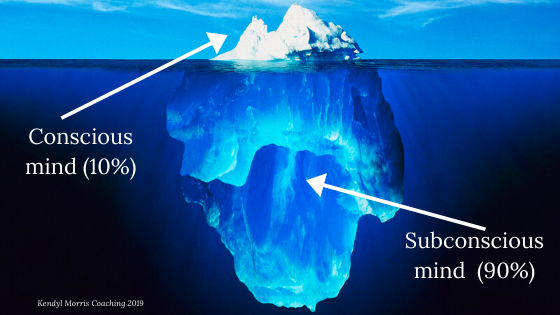When I was 5 years old I was molested by a babysitter. In these moments of powerlessness the only power a child has is over their mind, and so it’s common for them to dissociate from the experience in an attempt to reduce the trauma. Often times children don’t remember these isolated traumas because of this mental coping strategy, and this dissociative pattern often follows them into adulthood.
Until doing hypnotherapy, I didn’t fully remember this traumatic experience. I sometimes saw flashes of it in my memory, but assumed it was some terrible nightmare I was remembering, not reality.
You may ask yourself, “Why on earth would anyone want to go back to these traumas in hypnotherapy?” No one wants to reexperience trauma, and that isn’t what happens in hypnotherapy. In hypnotherapy, you’re able to go back to these traumas with support and resources so that instead of re-traumatizing you, it empowers you. The reality is that these traumas are stuck in your subconscious somewhere, creating patterns in adulthood that often aren’t in your highest good, and keeping them in the shadows only continues to give them power. For me, I developed chronic anxiety at around age 11 that followed me into adulthood and debilitated me from fully enjoying my life. I had constant nausea, struggled with insomnia, and always put others needs before my own. I embraced dissociative behaviors like binge eating, smoking pot, and oversleeping because I felt the unconscious need to cope with chronic anxiety. This went on for years – I even tried consistent traditional talk therapy and it never made any difference in the way I felt or behaved once I would leave the therapy office.
After 3 hypnotherapy sessions I made more progress than in 6 years of talk therapy.
This is because only 10% of our minds are conscious, and the remaining 90% is subconscious. This means that we are unaware of our ‘operating system’, one that was formed during childhood with an undeveloped brain. This is why in order to actually change a pattern like anxiety, depression, addiction, phobias, weight issues and even physiological imbalances like chronic pain or autoimmunity, you must explore the subconscious to shine light on where these patterns actually began.

During hypnotherapy, we use a mild level of hypnosis to relax the ego and conscious mind so that we can get straight to the root of your presenting issue – which is in the subconscious. You’re still fully aware of your surroundings and can’t be controlled by your therapist like you might see in stage hypnosis. We’re able to get to the root of your anxiety, for example, by regressing back to one of the first times you felt this way. Memories will voluntarily surface and from there we’re able to explore what you came to believe about yourself and the world during these situations. Trauma is relative to your experience but we all have it. For some, it might be that mom forgot to pick them up from kindergarten one day. For others, it might be more obvious trauma like sexual or physical abuse. Either way, when a child experiences this fear, they conclude certain things about themselves- beliefs that become the wiring that follows them into adulthood. The kid sitting on the steps watching all her friends get picked up that realized mom wasn’t coming might conclude that she isn’t important. When I was molested, my belief I took away was that I’m not safe. These beliefs get stored in your subconscious and become the filter in which you process information in the world. We also form behaviors related to these beliefs like, “I won’t stick up for myself,” or, “I’m going to hide.”
This is why talk therapy only scratches the surface of our unhealthy patterns. The reason why hypnotherapy works so quickly is because you’re able to go back to these memories, discover the old subconscious beliefs that still control the way you think, and then change them.
Once you reach a memory, you also have the opportunity to release the suppressed emotions that have been stuck in your body ever since which could be creating physical symptoms like nausea, pain, sweaty palms, weight gain, etc. This is done in a safe and contained space so that you do not become retraumatized. You are then able to reclaim parts of yourself that may have been left behind in these traumatic events. Things like your power, courage, autonomy, joy, or curiosity. As you release the pent-up emotions, reclaim the pieces that were lost, and form new beliefs about yourself and the world along with new behaviors, you’ll find that the present-day issue you wanted to work on doesn’t have as much power in your daily life. A situation that might have triggered your old belief of not being safe or important won’t have the same strength as it once did because in choosing a new, more productive belief, you’ve literally formed a new neural pathway for information to process through. Eventually this will become the new filter without even having to think about it.
The lesson here is that in order to get to the root of your unproductive patterns, you have to dive into the subconscious. Most of us have spent decades suppressing our emotions and so it takes courage and trust to willingly allow them to surface. But the beautiful thing is that once they surface, they can then release, no longer subconsciously controlling the way you perceive the world. You can gently and lovingly take the wheel from your child self and become the adult driver of your vehicle. You can take your power back and no longer be prisoner to your anxiety, depression, or addiction. It’s an extremely freeing feeling to know that you’re no longer controlled by those who traumatized you as a little one. My little girl who had her power taken away is no longer afraid and anxious. She’s joyful and courageous, her passion for life reignited. Once you learn how to love on your inner child, everything changes.


